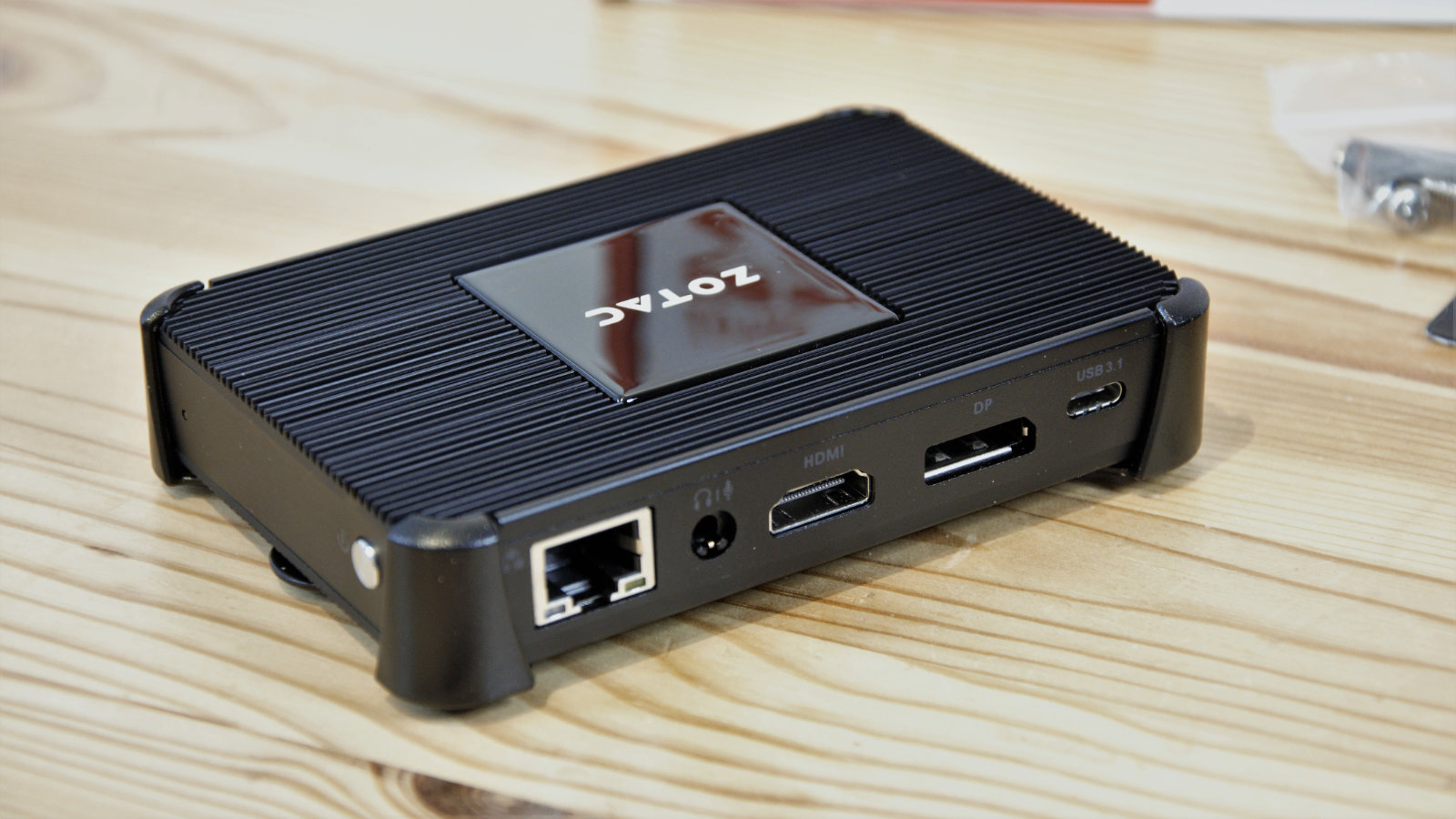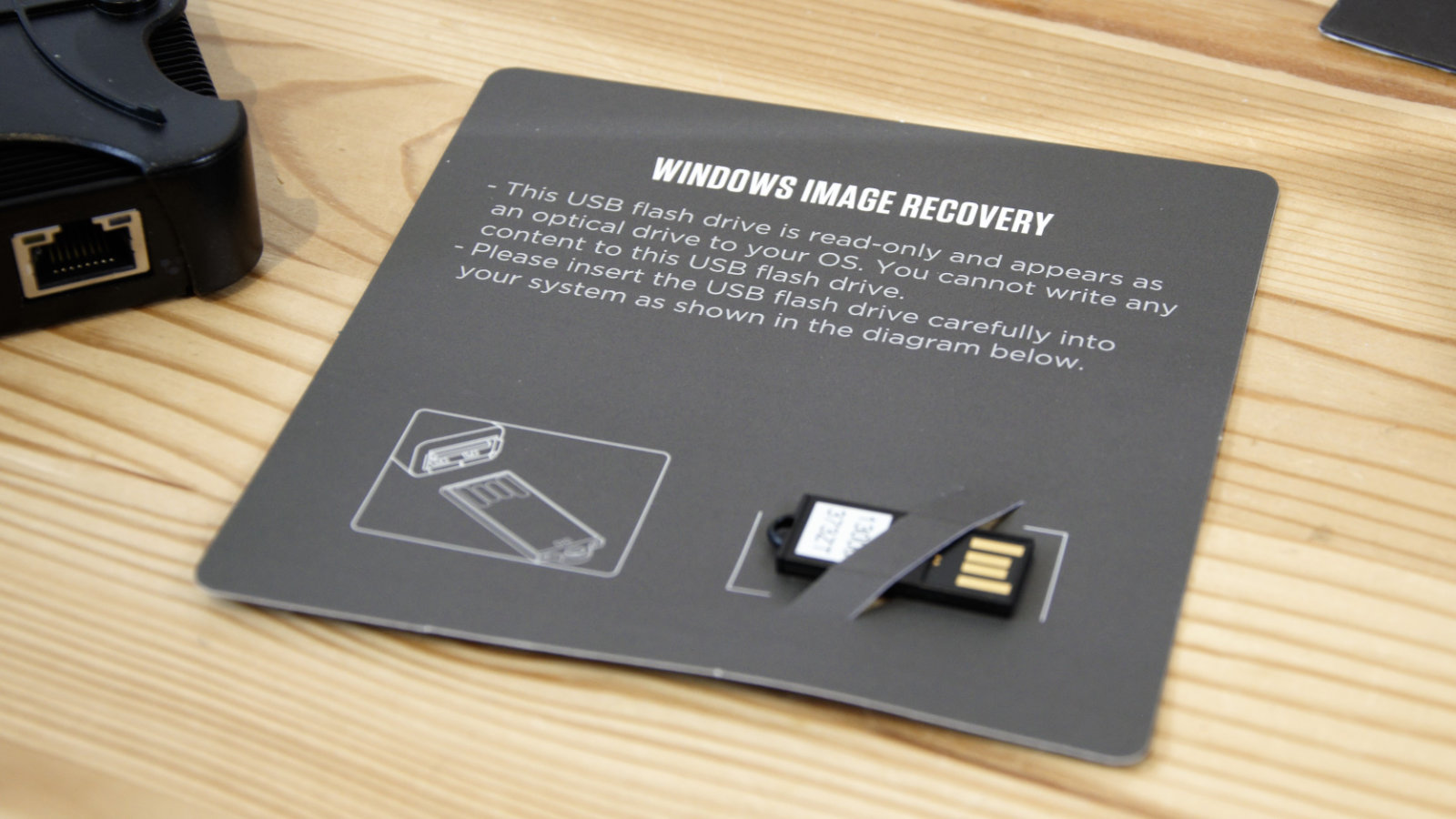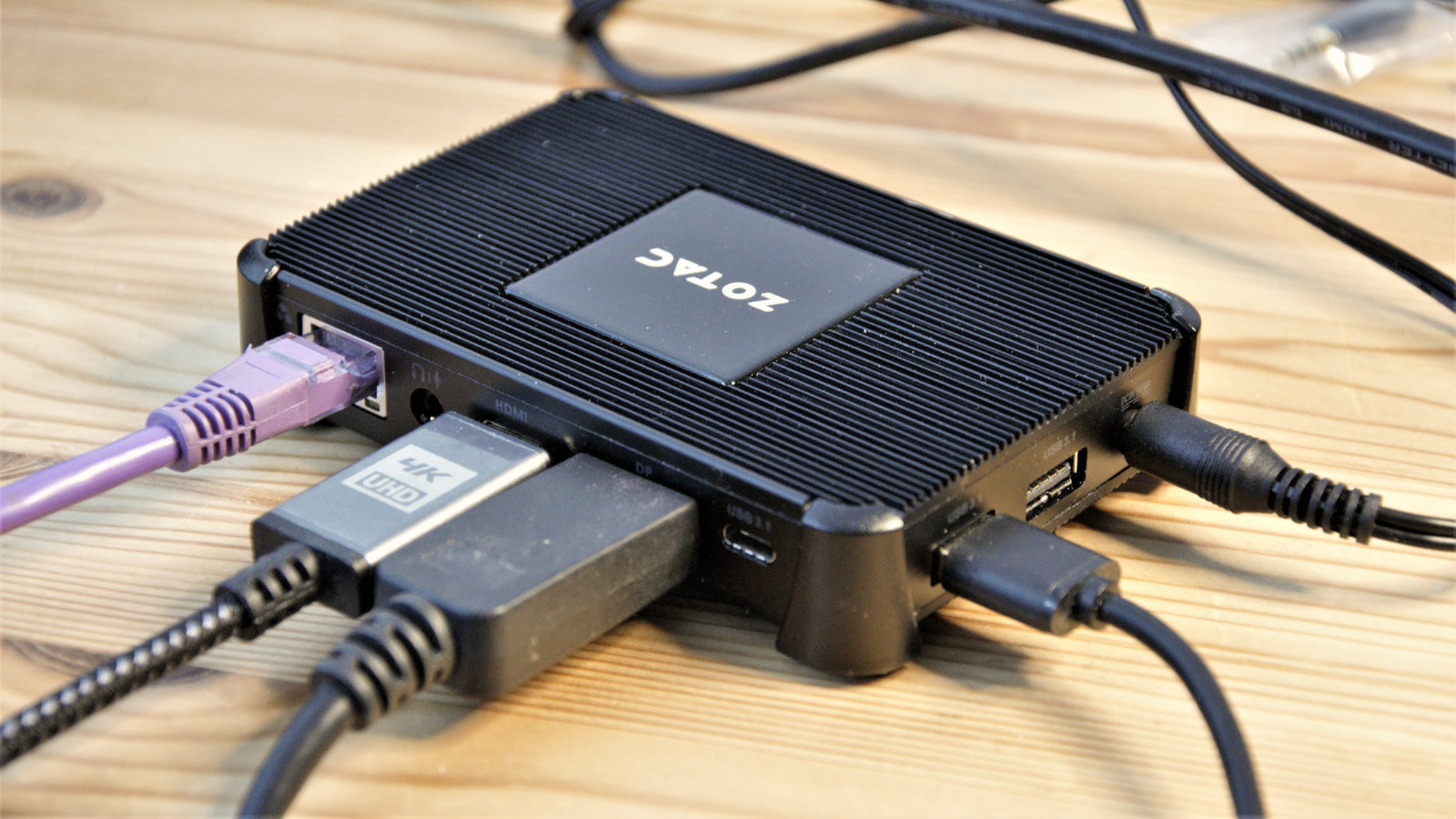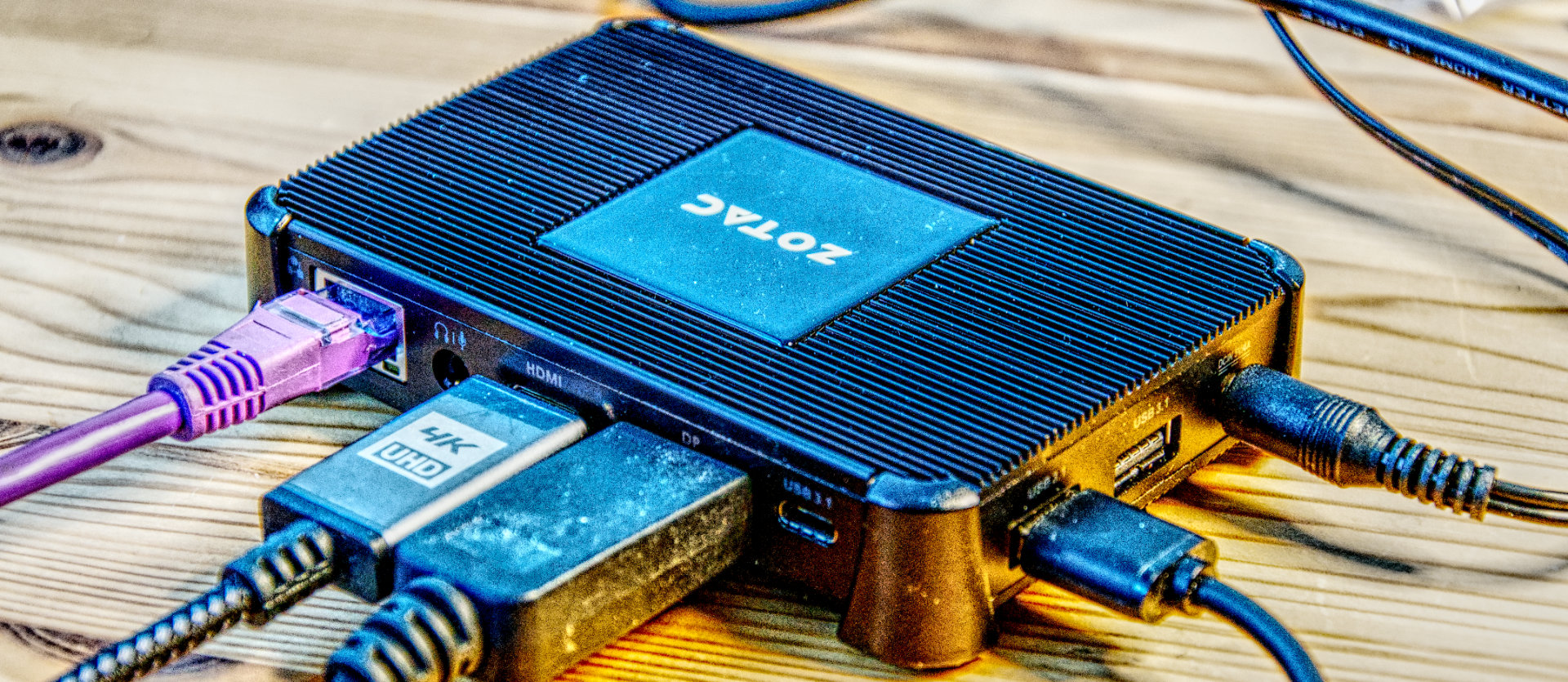Why you can trust TechRadar
In use
It’s understandable why the Pico comes with Windows 11 on it, but conversely, its use effectively sticks giant neon signage above the performance limitations of the N6211 and eMMC storage combination.
The first hours, or even a whole day, of owning this hardware are a torrid experience. Both cores are comprehensively logjammed by the tsunami of updates that Microsoft unleashes on its customers.
After what turned out to be a very long time, we eventually reached that point where the system accepted that it was up to date. On a more powerful system, that would largely be the end of the issue since the computer should be able to ingest new updates while doing other things. But here, that’s a flawed assumption.
Should Microsoft decide to upgrade something in the background, it directly impacts foreground performance as apps and the browser becomes curiously unresponsive.
While I didn’t put a Linux installation on the Pico to see what that was like, I can say that Windows 11 on it is a horribly staccato experience where the users’ inputs are frequently ignored or stored up for a scatter-gun of unexpected action at some later date.
But incredibly, these are not the worst aspects of the Pico.
While testing this machine, it became remarkably hot. So elevated were the temperatures that it wasn’t possible to touch the top surface for more than a few moments.

Performance
Here's how the ZOTAC ZBOX PI336 Pico scored in our suite of benchmark tests:
3DMark Wild Life: 1,176; Fire Strike: 439; Time Spy: N/A;
Cinebench R23 CPU pts: 432 (single-core); 720 (multi-core)
GeekBench 5: 531 (single-core); 817 (multi-core), 1045 (OpenCL)
CrystalDiskMark: Sequential Read: 280.8MB/s; Sequential Write: 107.63 MB/s
PCMark 10 (Office Test): 1,351
Windows Experience Index: 4.5
Investigations inside revealed that the processor and chipset silicon is inverted and then connected to the underside of the Pico by a finely milled metal plate. This is the side of the machine that won’t be seeing much, if any, airflow, and the outside of the case is one big passive heatsink.
With the CPU limited to 70C, and no fan to increase in speed, once the system reaches this temperature, its only course of action to stop runaway thermals is to throttle the already slow processor.
Even if you don’t run the Pico aggressively, there is one issue with this machine that isn’t Zotac’s fault, other than they agreed to install it; Windows 11 Pro N.

What a horrific mess this OS is, considering how long Microsoft has had since Windows 10 launched to address those foundations.
Out of the box, this version of Windows won’t even play video files back without a complicated installation of the Media Features pack. Why isn’t this included by default, and what does Microsoft think people do with their machines?
While Windows 10 is far, far from perfect, compared with Windows 11, it's mostly functional from the installation once you’ve got past the awkward updating phase.
With only 4GB of RAM that can’t be upgraded, Windows 11 was a poor choice and makes the performance hill for the poor Pico seem marginally steeper than it needed to be.

To be brutally honest, this is one of the slowest systems this reviewer has tested in some time. It even makes some cheap laptops seem agile and athletic in comparison.
What made some of these tests even more challenging was all the things Microsoft decided to leave out of the Windows 11 Pro N install, including all the code needed to drive video streams.
Initially, PCMark10 wouldn’t run at all until the Windows 11 Media Features Pack was installed.
The only test that wouldn’t eventually run from our normal selection was 3DMark Time Spy, because it complained that there was insufficient VRAM to work. Sometimes it is possible to adjust VRAM in the BIOS of systems using an integrated GPU, but not on the PICO.
That said, the number it might have generated had it run would have been small, as indicated by a score of just 439 in the less demanding Fire Strike test.
Even the Wild Life test isn’t smooth, and most phones can achieve that distinction.
Of the other tests, the most significant is the CrystalDiskMark 8.04 score, as it shows where some of the performance bottlenecks are beyond this lacklustre processor.
The read speed of the eMMC drive isn’t terrible, even if it's not an SSD, but the write performance is worse than most conventional hard drives.
For anyone reading this review and wondering if this unit might make a suitable streaming solution, it won't. Selecting 4K video streams from YouTube results in the CPU hitting 100% and then the stream pausing, repeatedly. It will play media files to a degree, but not any better than a much cheaper Chromecast with Google TV.
Overall, the performance on the Pico isn’t sufficient for most applications, however basic they are.
Final verdict
Not sure what Zotac engineers thought when they devised the Pico. Its performance is poor whatever task you throw at it, especially if you are rash enough to use it with a 4K monitor.
A combination of things undermined the Pico from the outset.
The first candidate is the Intel Celeron Processor N6211, a very limited SoC further limited thermally by a passively cooled enclosure. Without any active means to manage heat, this system will throttle, inevitably. The next nail in its hardware coffin was the eMMC storage that performs like an old 2.5-inch hard drive when writing data.
But, even with those limitations, it could have managed expectations if it wasn’t for Windows 11 Pro N, an operating system expecting to find a Threadripper cored CPU and an RTX GPU just around the corner. This OS doesn’t come loaded with the files it needs from the outset, and it sucks what get-up-and-go the Pico had to begin with.
This system needs a significant rethink because this combination of hardware and software isn’t a viable solution for most applications or users.
- 1
- 2
Current page: In use, performance and verdict
Prev Page Introduction, price, design and hardwareMark is an expert on 3D printers, drones and phones. He also covers storage, including SSDs, NAS drives and portable hard drives. He started writing in 1986 and has contributed to MicroMart, PC Format, 3D World, among others.

